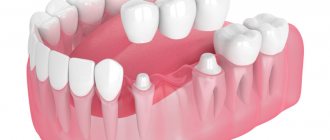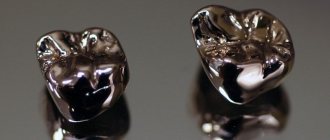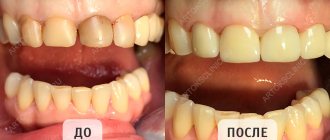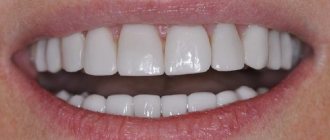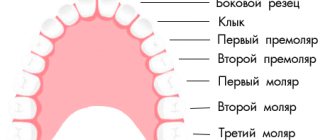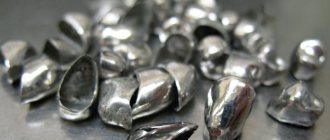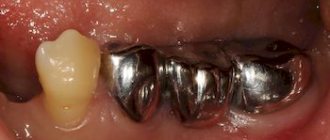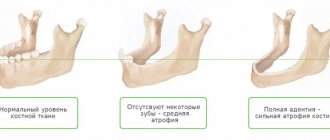Signs that make it easy to determine a person’s character by their teeth
Shape of teeth
says a lot about a person, and you can determine
the type of person by his teeth
by paying attention to the following signs of the dentition:
Upper incisors
| People with long incisors They are usually the life of the party, but at the same time they persistently strive for their goals and are quite open in communicating with others. Large incisors most often occur in adamant, stubborn people who persistently pursue their goal. Despite their difficult nature, those with large teeth are distinguished by their sincerity. Large gap between teeth betrays the explosive nature of their owner. In addition, the hole indicates an addiction to risk, which is not always justified. |
Fangs
It is generally accepted that large, sharp teeth
, including fangs, speak of a person’s aggressiveness. In fact, this is not always the case. In most cases, such teeth reveal a loving person. They can also talk about determination.
For example, if a woman’s upper canines are large and long
, then this can emphasize her kindness and humor.
Evenness of teeth
| A person's character can be determined by the curvature or straightness of their teeth. Ideal dentition speaks of a balanced, calm character. Such people are not afraid to make decisions and take responsibility. They are eloquent, self-confident and ready to go towards their goal no matter what. Uneven teeth speaks of the good intuition of the owner of the teeth. |
A person’s small, fox-like teeth can also tell about a person’s character.
— owners of such dentition are often characterized by lust.
Protruding teeth
characteristic of stingy people.
Teeth size
Strong large teeth
testify to a person’s courage, strength and kindness. Such people are most often long-livers.
| They will tell you what character the girl has and small teeth - often their owners are quite secretive and reserved natures. They have a small number of friends. Often people around them simply do not understand them, considering them strange. What do sparse teeth a person does not need to think for long - such teeth indicate people with a wild imagination, who always have a fresh, interesting idea in their heads: they can often even be considered strange. They are also distinguished by their tenacity of character and always go towards their goal. |
Small teeth
, among other things, can talk about greed. Such people have a hard time parting with money and are certainly not ready to spend it on others, be it relatives or friends.
Presence of damage
The presence of damage to the dentition can also indicate the character of a person
So, if
the upper row of teeth is damaged
, this will indicate difficulties in unlocking your potential, and if there are
problems in the lower part (especially in the left)
, you should think about problems in family relationships.
Problems with large teeth
Whenever we talk about a slight deviation from the norm or a slight disproportion, enlarged crowns do not entail any problems. Large front teeth are in fashion today, as they give the face a more youthful appearance, so it is not always possible to even talk about aesthetic flaws. But if we are talking about pathology, then too large teeth entail unpleasant consequences.
- Large teeth do not have enough space, which is why they can curl and extend beyond the dentition. This forms an incorrect bite and affects not only the aesthetics of the smile, but also digestion.
- A large molar in a child often causes a delay in the eruption of neighboring teeth.
- If the patient’s teeth are not large by nature, but have become so over time, this indicates gum disease. It must be cured before proceeding with the elimination of aesthetic defects.
- Teeth that are too large can distort speech.
- People with disproportionate teeth face psychological problems: they are embarrassed about their smile, try to communicate less, and feel self-conscious.
How to fix small teeth?
Small tooth: what to do if it causes inconvenience, reduces self-esteem and worsens quality of life? Depending on the severity of the picture, the dentist may suggest the following correction methods:
- In case of isolated microdentia, small teeth can be corrected by installing veneers or lumineers - thin plates that are attached to the front surface of the tooth. This method is also suitable for eliminating threes and diastemas and increasing the width of the visible part of the crown. If your teeth grow unevenly, you will most likely need orthodontic correction using braces before placing veneers.
Treatment and prevention of dental anomalies
It should be remembered that dental anomalies are a serious disease for patients of all ages and professions and require long-term and thorough therapy to maximize or completely eliminate dental pathologies. Modern dentistry and advanced equipment are capable (if not completely, then maximally) of eliminating the manifestations of dental anomalies. A timely visit to a specialist in order to establish an accurate diagnosis and determine a treatment plan can guarantee a favorable prognosis for recovery. Dentists will be able not only to restore the functional abilities of the jaw, but also to eliminate various aesthetic defects.
Prevention of the formation of dental anomalies begins with taking care of the correct intrauterine and postnatal development of the child. This includes:
- balanced diet;
- timely correction of endocrine disorders;
- regular visits to the dentist to carry out the necessary preventive and therapeutic measures;
It is important to monitor your own health in the first days after the birth of your child.
Early breastfeeding and a balanced diet will help avoid many dental anomalies. We should not forget about a complete preventive examination by the dentist - at least once every six months. Moscow metro station Zvezdnaya, Danube Avenue, 23
Reasons why teeth become small
As a rule, most of the reasons leading to the appearance of small front teeth in adults come from childhood, when pathological processes interfere with the formation of body systems. Microdentia can be a consequence of:
- severe infections suffered before the age of 2 years;
- exposure to radiation;
- inflammatory diseases in the mother during pregnancy;
- early removal of baby teeth;
- underdevelopment of the alveolar ridge and, as a consequence, lack of sufficient support for “growing” teeth of normal size.
Dangerous consequences of microdentia
At first glance, it seems that small teeth in an adult cause only aesthetic inconvenience, but this is not so. Dentists identify several quite serious problems that microdentia can lead to.
- Distal displacement of teeth,
that is, their gradual shift back relative to the optimal position in the jaw. - The appearance of gaps between the teeth
(the so-called diastemas and threes), which lead to disruption of the contact of the lateral surfaces of the teeth. Without support, the ligaments in the dental bed stretch and the tooth becomes unstable. - Diction disorders,
excessive amplification of hissing and whistling sounds in speech. - Periodontal disease
is a disease of the soft tissues of the jaw, caused by accumulations of bacteria in the interdental spaces and an enlarged periodontal pocket due to the high mobility of the tooth.
In the future we will not have wisdom teeth
Third molars, or wisdom teeth, helped our larger-jawed ancestors grind roots, nuts, and leaves. But now about 35 percent of people are born without wisdom teeth. For the rest, dentists recommend removing them, since our oral cavity is too small for them. When our body no longer needs certain organs or parts, they become vestigial and eventually disappear. According to scientists, future generations will not have an appendix, wisdom teeth and perhaps even little toes.
Ideal teeth size
In dentistry, teeth of a certain size and anatomical shape are considered normal, depending on the size of the jaw and their location in it. They must be smooth, fit tightly to each other and have a thickness within certain limits: for example, the height of the lateral incisors in an adult is normally 7 - 11 millimeters. Of course, this does not mean that they need to be measured with a ruler - overall aesthetics and proportionality are much more important (for example, for people of short stature and fragile build, a small teeth size is appropriate). Many parents are interested in why their child has small teeth, but usually there is no reason to worry: normally, the baby incisors are small and located at a distance from each other.
However, if the patient really has very small teeth, you should definitely consult a dentist to confirm or exclude the diagnosis of microdentia.
Formulas for calculating proportions
The normality of the crown part of the teeth is determined not by their size, but by the width and length of the dental arches, which are considered normal for a specific group of patients.
If the length and width of the arch correspond to the norm, and all the teeth on it are located without crowding or gaps, then their sizes are considered normal.
Many different techniques have been proposed to determine the normality of the jaw arches, taking into account the age, facial type and nationality of the patient. Three of them are discussed below - the Gerlach, Pon-Linder-Hart and Corkhouse methods.
Gerlach method
According to the Gerlach method, the dentition is divided into 3 segments:
- anterior, consisting of 4 incisors;
- two lateral ones, consisting of canines, premolars and the first molar.
Next, the calculation is made according to the following algorithm:
- The length of each segment is measured. In this case, the value of the length of the lower frontal segment is obtained by multiplying the length of the upper frontal segment by the Tone coefficient (1, 35).
- Compare the obtained lengths of the segments with each other and the tabular data compiled by Gerlach. With normal jaw sizes, they must be in certain proportions to each other.
If it turns out that the dimensions of the arches are normal, and there is no crowding or gaps, then the dimensions of the clinical crowns are normal.
Reference. All methods used involve measurements of dental arches at strictly defined points and according to certain methods. Because of their relative complexity and length, they are not included here. But they can be easily found in numerous sources.
Pon-Linder-Hart method
This technique is intended to determine the normal width of the dental arches in children with variable and permanent dentition. In this case, the formula developed by Pont is used and has the following form:
A ∶ 80 × 100 = distance between first premolars
A ∶ 64 × 100 = distance between first molars, where:
- A – total width of 4 incisors;
- 80 and 64 – Pon coefficients (indices).
Linder and Hart found that these coefficients for children of German nationality should be 85 and 65, respectively.
The algorithm for determining the parameters of the upper jaw according to Pon-Linder-Hart is as follows:
- The total width of all incisors along their cutting edge is measured.
- The obtained data is substituted into the Pon formula, and the distance between the first painters and premolars is calculated.
- The actual width of the dental arch between premolars and molars is measured.
- The measured value is compared with the results determined using the Pon formula.
- A conclusion is made about the compliance of the width of the arches and the size of the crowns with the norm.
Based on the data obtained, a treatment plan is developed. In particular, when the row in the area of premolars and molars is narrowed by more than 6 mm, it is recommended to remove some units or widen the jaw.
Corkhouse method
The Corkhouse method is based on the relationship that exists between the total width of the maxillary incisors and the length of the anterior segment of the jaw arch, measured according to a certain scheme.
The following algorithm of the Corkhouse technique is used:
- The total width of the 4 maxillary incisors is measured.
- The length of the anterior segment of the jaw arch is measured. This is done using a technique developed by Corkhouse by connecting certain points on the occlusal surface.
- The actual size of the arc segment is compared with the desired one.
Based on the data obtained, a conclusion is made that the size of the teeth and arches corresponds to the norm, and a treatment plan is developed.
Some people have too many teeth
About 2 percent of people experience hyperdontia, in which a person grows additional supernumerary teeth. Many of these teeth remain hidden under the gums, but sometimes they erupt and begin to crowd out other teeth. It is very rare for a person to lose a permanent set of teeth at an older age and grow another set. Everyone else will need dentures.

